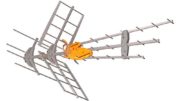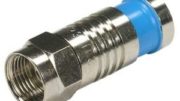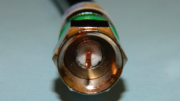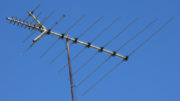I think by now everyone knows that I’m a big fan of the Televes amplifiers. One thing you might not know is that they are actually adjustable. In many cases you don’t actually need the full amount of amplification and you might want to turn it down somewhat. There’s actually an adjustment screw on all Televes amplifiers and they even give you a handy screwdriver. Don’t believe me?
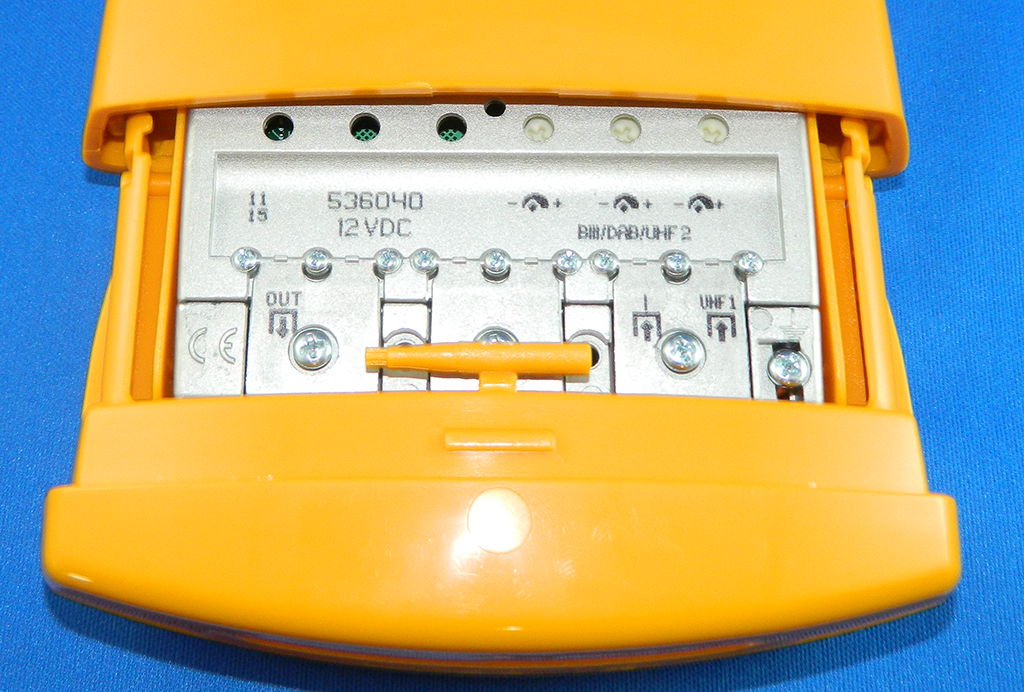
This is the Televes mast amplifier. It goes outside to let you combine up to three antennas. The adjustment screws are near the top right, and that orange plastic bar at the bottom is a screwdriver you can use in case you need one.
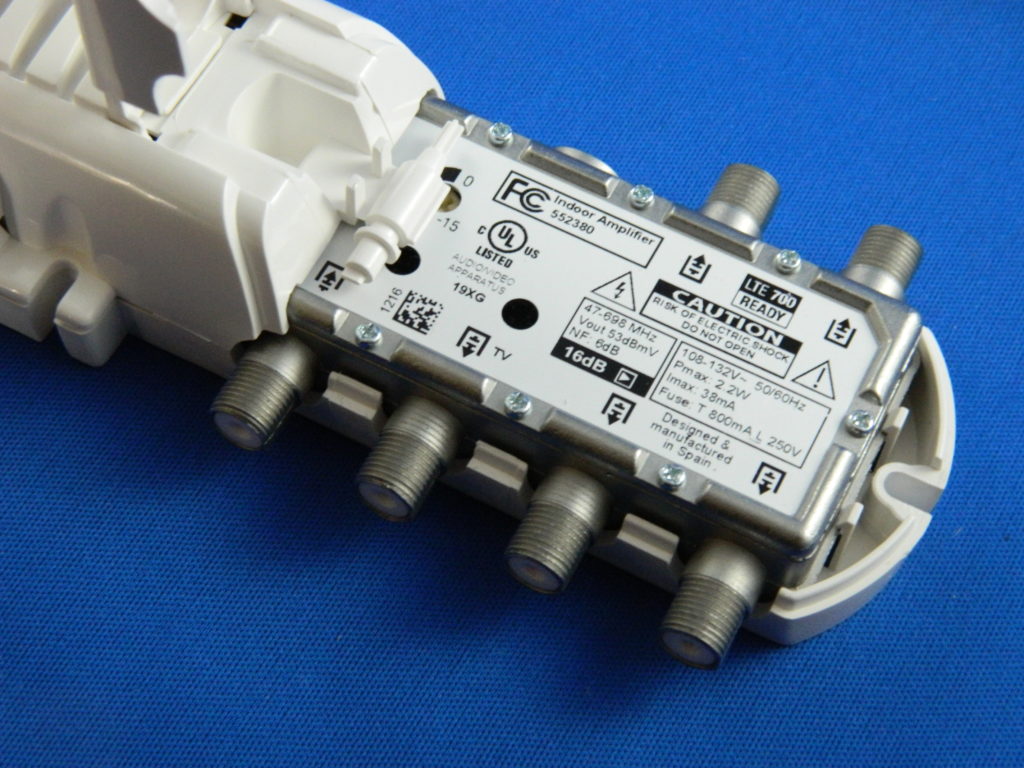
This is the Televes indoor amplifier. The screwdriver’s a little harder to see, but it’s up near the middle left. The screw is underneath it. Here’s a better view of the screwdriver in use:
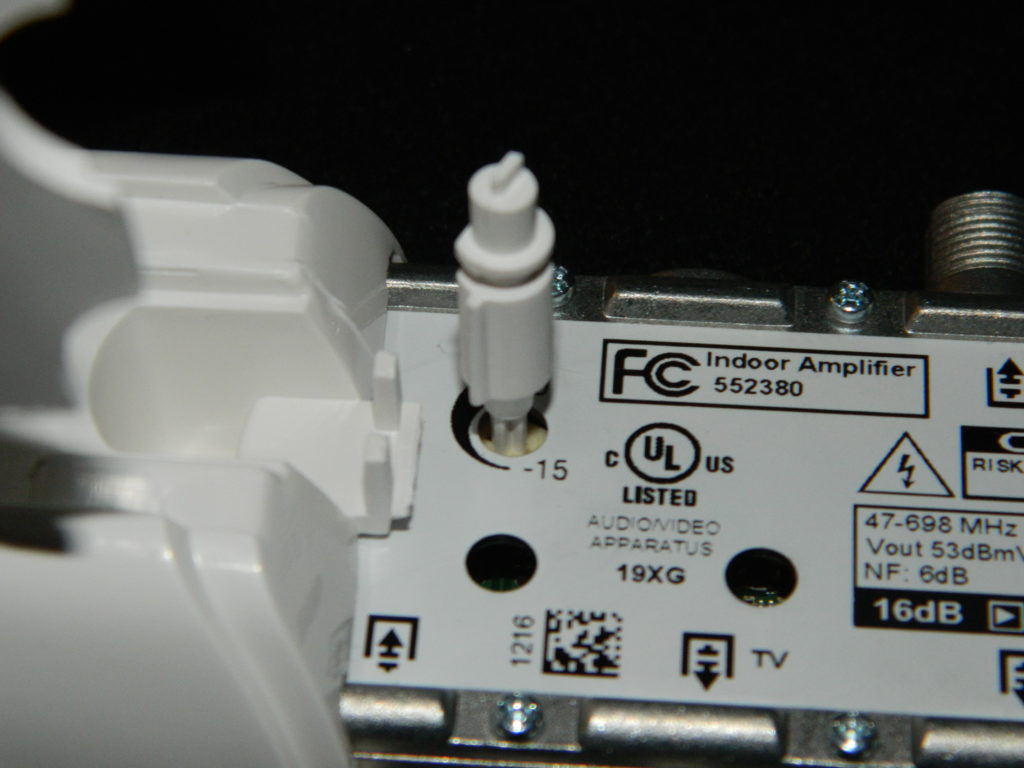
This screw is adjustable so that the amplifiers deliver as little of 5dB boost, or the full amount of up to 20dB.
Sometimes more power isn’t better.
You don’t want to overload your TV’s tuner, because that can mean the picture is even worse than when you started. You want to provide the strongest possible signal to your TV but not one so strong that the tuner can’t handle it. TV signal is kind of like sound in that if there’s too much of it, it gets hard to receive it. You can actually burn out a TV tuner with too much signal, although you’d have to try pretty hard.
If you have a good signal meter, you can get great results. The goal here is to get every channel as high as it can get at the TV site. Just don’t exceed. 70dBµV. (The same number can be expressed as -39dBm, the other measurement that is used for antennas.) This will take some tweaking, and that’s what the Televes amps are perfect for.
Without a signal meter, it’s hard to get things perfect, so start the other way. Turn the amplifier down to its lowest point then scroll through every channel on every TV. Then keep turning the adjustment screw. Try to get as many channels as possible nice and strong, while none of the channels which were good get worse. It’s going to take some time which is why a signal meter might actually seem like a good investment.
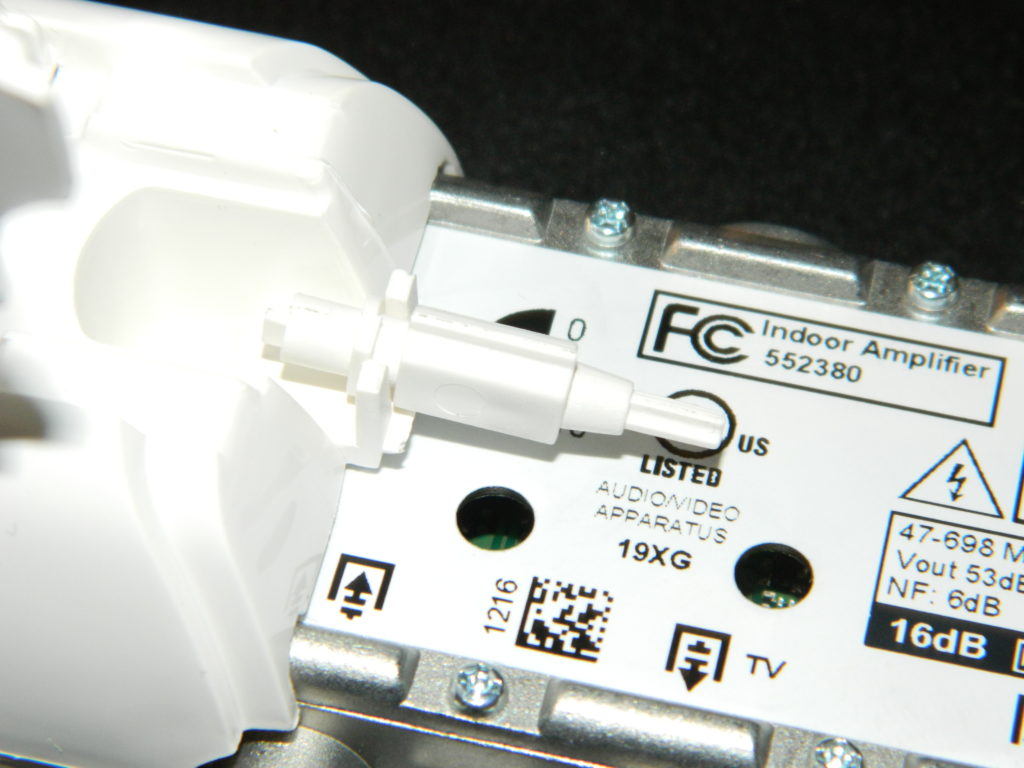
With all the adjustments complete, the little screwdriver goes back into the case, in a notch made for it. If you need to make any tweaks it will be there for next time. If you need it, pretty much any precision screwdriver will do the same thing.


